The rise, grim fall and redemption of Johannesburg's Ponte City skyscraper
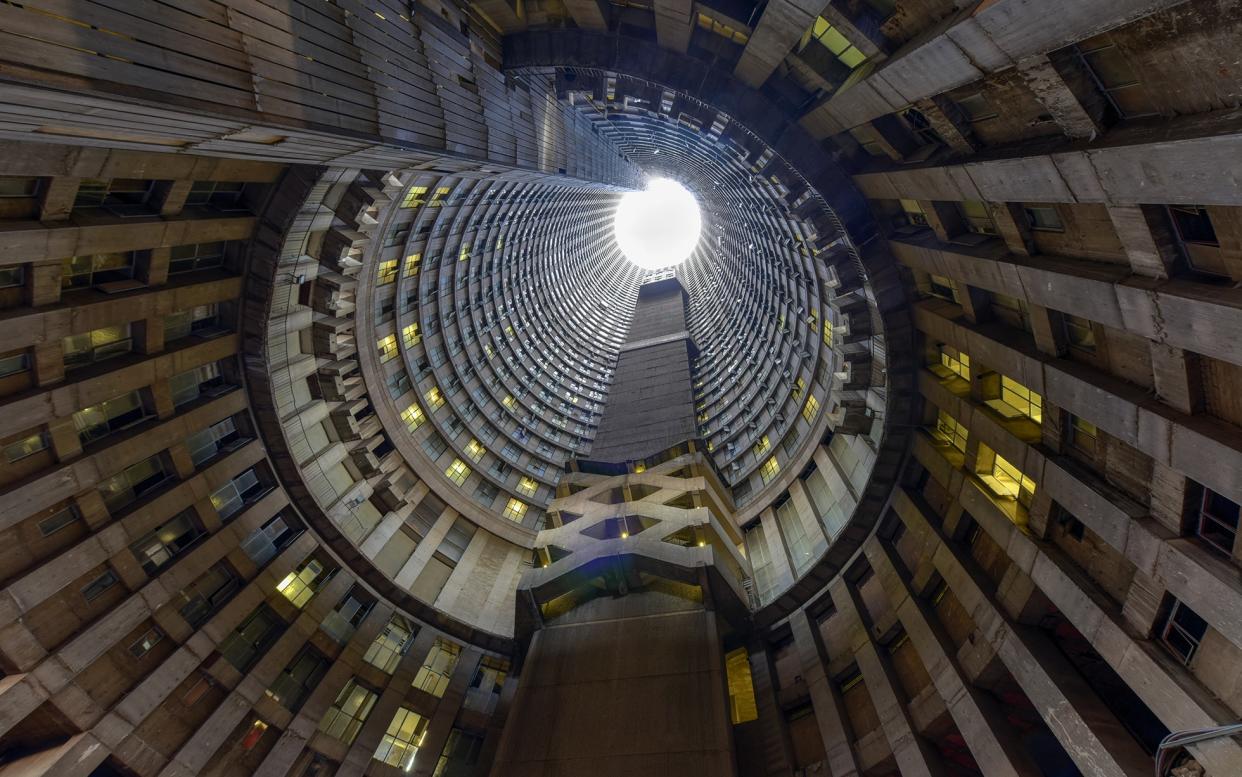
We have written on these pages in the past about the allure of "dark tourism"; of that instinct some of us have for seeking locations where disaster has struck, and staring into the void.
You can, these days, should you so choose, be guided around Namie, the town which - as of the earthquake which hit Japan on March 11 2011, triggering a catastrophic collapse at the adjacent Fukushima nuclear power plant - has been abandoned by a population that once numbered over 18,000. Pripyat, meanwhile, is far more famous as a ghost and a travel destination than it was as an industrial town before the Chernobyl disaster brought a tiny fragment of the Ukrainian landscape into global focus.
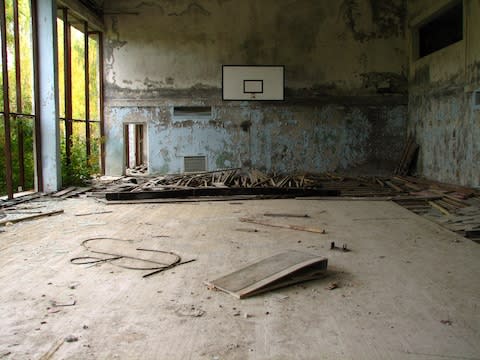
There is always an element of conscience-squaring about seeing such locations. Where does the line fall between gawping at a car crash and being witness to a sad chapter in human history? Does the passing of a decent amount of time between visit and incident wash away any accusations of insensitivity - and if so, how soon is too soon? Or are we all ultimately programmed to stare at the wreckage, like motorway rubber-neckers?
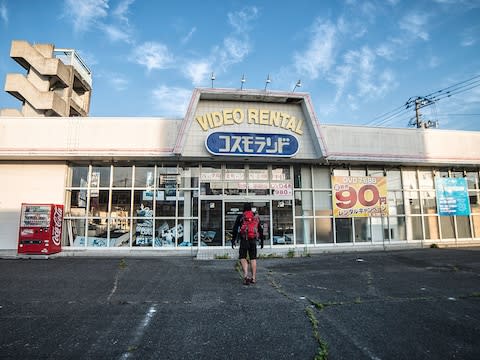
There is, of course, a lesser version of "dark tourism". Let's call it, perhaps, "shades-of-grey tourism" - which ventures to sites which, if not quite places where a cataclysm has occurred, have certainly lived in the shadows of hard times. And generally, the setting for such escapades is urban - in sections of major cities where the ebb and flow of economic tides has left buildings and once-aspirational projects stranded on the shore.
Take, for example, Ponte City, the Johannesburg skyscraper which has come to stand as a symbol of the South African metropolis's fluctuating fortunes over the last half a century.
Here is a visible incarnation - 568ft (173m) of it, to be exact - of what happens when a conurbation is rocked by political turbulence, the overthrow of a racist social order, and money's inevitable dash to a "safer" haven on the far fringes of town. It was conceived, as such structures generally are, as a luxury enclave - dropped into the Berea district in 1975 as a home for well-to-do white residents. At the time, it was the second tallest building on the African continent (and still is, until the Britam Tower is completed in Nairobi) - an architectural statement in which people wanted to live.
Top 10 | Africa's tallest buildings
Its design alone was a talking point - a giant cylinder, with curved flanks glinting in the sun, and a hollow core that allowed daylight to penetrate the bathrooms and kitchens inside its 55 floors of apartments. Stores and shops were added at the bottom of the complex, and there was even talk of an indoor ski slope. It was an cash-happy triumph.
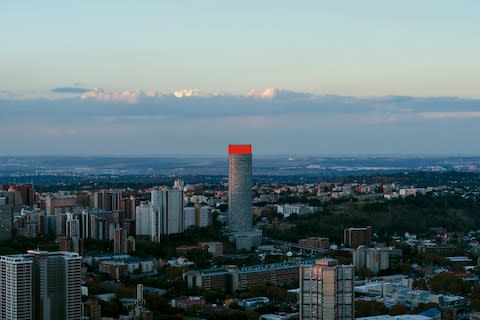
Then came the fall. As Berea and neighbouring Hillbrow became mired in crime in the Eighties, so the wealthy white inhabitants of Ponte City fled to the distant suburbs, leaving the skyscraper and the areas around it to the Johannesburgers who were damned by the apartheid system.
What had been a dream address was swallowed by poverty. Legends about the tower in this epoch are myriad - that it became a nest of gang members and criminals; that the local authorities left it to rot; that, with rubbish collections discontinued, those living in the upper storeys would simply throw their garbage into the interior space, until the first five levels were consumed by fetid bags, boxes and decaying matter; that when the moment finally came to reclaim the tower and clean up, dead cats and human corpses were found, decomposing in the slurry.
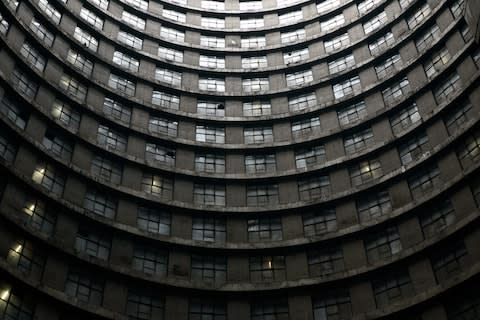
How many of these tales are no more than rumour and conjecture is difficult to gauge - but Ponte City has undergone a redemption of sorts in the last few years. A number of changes of ownership since the turn of the millennium have seen it resurface as somewhere you might want to live. Evidence of its upturn in fortunes is there in money's return to a stage it had fled - the building's elevated rooftop is now used as a neon advertising platform (currently by the South African mobile communications company Vodacom). Further proof is in the fashion for using it as window dressing. The skyscraper has lately turned a trick as a cinematic backdrop - albeit in the sort of blood-splattered apocalyptic movies (such as 2009 science-fiction/horror District 9 and 2016 zombie-fest Resident Evil: The Final Chapter) that will do nothing for its image.
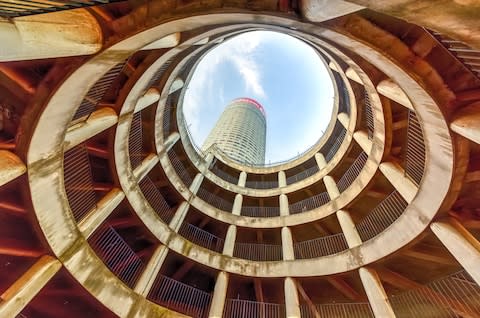
You can now take a tour of it, with a local guide, and ask some of the awkward questions that may have occurred to you while reading the above paragraph about cats and corpses. Clara Wiggins of The Independenthas done an excellent job of describing the process, and if you want to sample a similar experience, you can do so (from 350 Rand/£21.50) via Dlala Nje (dlalanje.org), a Johannesburg company which "was founded in October 2012... and aims to challenge perceptions and create opportunities. We do this through running inner-city immersions and experiences in some of our city’s most misunderstood areas." It is worth doing so in their company, as Berea is still a place with its troubles. Unaccompanied visits by tourists are not recommended.
This prompts an obvious question: Just because you can, does it mean you should? If you want to visit Ponte City to see how a (slowly) resurgent Johannesburg has found its feet in post-apartheid South Africa, perhaps this is for you. If you simply want to walk through the halls of a notorious landmark and feel house-of-horror shivers, well...
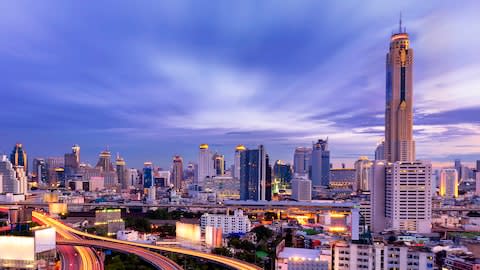
As with disaster-zone tourism, the divide between the inappropriate and the acceptable can be so faint as to be invisible. There are numerous cities where you can espy grand urban buildings of dubious back-story. Myths are manifold about the "Tower of David", a 45-floor behemoth (officially the "Centro Financiero Confinanzas") in the Venezuelan capital Caracas, which, though never completed, had a peak population of 5,000 as recently as 2011.
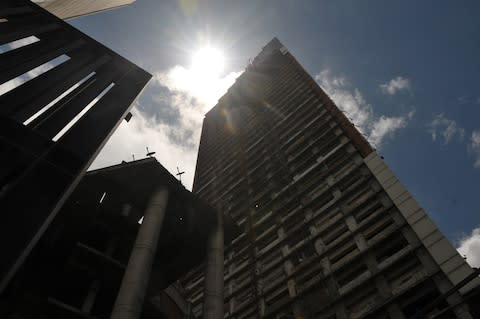
Founded as a complex of apartments, offices and hotel rooms in 1990, the skyscraper should have been finished in 1994, but was assailed by issues including the death of its main investor (David Brillembourg - the source of its name) in 1993, and the frequent financial lurches and plunges which have held Venezuela in their grip in the last 30 years. The total absence of basics such as running water, electricity, railings, windows and walls were not, however, enough to stop the Caracas poor moving in as the city's housing crisis bit in the Noughties.
Did you know? | Five facts about Venezuela
You would be a brave and foolish traveller to go searching for the Tower of David in Venezuela's current state of political unrest (in short, the Foreign and Comonwealth Office's current advice map on the country is a mass of orange and red). But if you want urban decay with a side-order of social commentary, Detroit is always to hand.
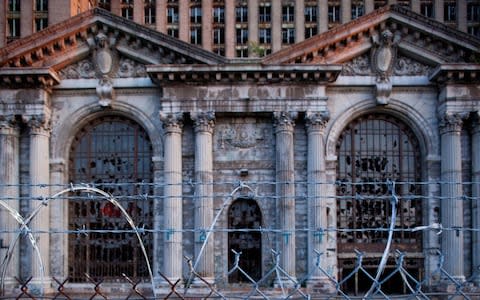
The frayed condition of this post-industrial metropolis requires almost no explanation. It is there, most infamously, in Michigan Central Station, the ornate Beaux Arts railway terminus which has not welcomed a train since 1988. It is there too, in the Book Tower - a 476ft (145m) slab of Renaissance revisionism which began to rise in 1916, but has been wrapped in red tape and legal complications since 1988, and is now unoccupied.
I photographed both on a day spent wandering through Detroit in 2012 - and it is easy to do the same on an organised tour. Urban Adventures (urbanadventures.com), for example, sells a two-hour "Detroit's Rise, Fall & Renewal" jaunt (US$27/£19) which calls on some of the city's key architectural fallen angels. Viator (uk.viator.com) treads a similar path with its four-hour "Detroit Urban Exploration and Photography Tour" (US$75/£54).
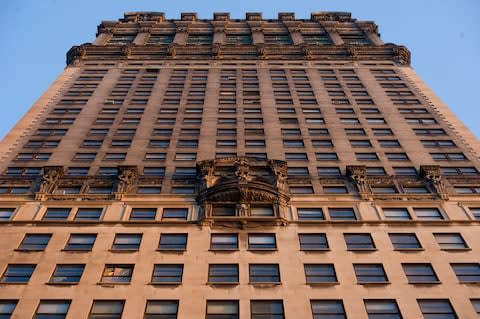
How these excursions are likely to make you feel is (obviously) down to individual perspective. When I was snapping photos of the station, I realised that two police officers in a parked car were watching me. They were amused at my interest in a relic which draws little affection from residents of its own city, and their casual disregard for a such an amazing - albeit derelict - building irritated me. When I found myself driving through the surrounding districts - Corktown and Woodbridge in particular - and was passing burned-out homes and deprivation of the rawest kind, I became uncomfortable, realised I had become the rubber-necker of the sort I have decried above, and found instead a middle ground in the wonderfully ornate mosaic-clad Guardian Building (guardianbuilding.com), whose Art Deco verve has been restored with such dedication that it must be as glorious now as it was when its doors were first flung open in 1929.
Eerie photos of abandoned Olympic venues as they look today
And perhaps this is the point. The need for a middle ground, of the sort occupied by Worst Tours (theworsttours.weebly.com) - the canny operators who show interested parties the underbelly of Porto. Not in mockery of Portugal's second city, but in an attempt to reveal the reality of their home to visitors who would otherwise not move beyond the sherry bodegas and the Dom Luís I Bridge.
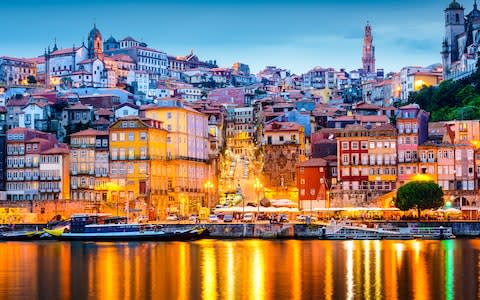
Their guided route through the east side of the conurbation, for example, looks at districts which have been, in their words, "forgotten for years" and are "the next place[s] for massive investment and renovation". They also ask pertinent questions, such as "is the only possible investment the turning of every building into hotels (paid for with tax money)?", "what about production?", and "what will Porto be living off, in 30 years, besides tourism?". Shades-of-grey travel is all very well, but it helps if it can also direct people towards bluer skies, and brighter horizons.